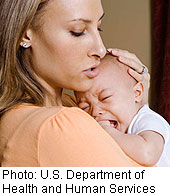
SATURDAY, April 30 (HealthDay News) — After reviewing more than 50,000 prescriptions for narcotic-containing drugs given to kids up to age 3, researchers found that about 4 percent were given an overdose.
The rate was much higher among the youngest babies, the study found.
“Almost one in 10 of the youngest infants, ages 0 to 2 months, received more than twice the dose that they should have received based on their age, gender and a conservative estimate of their weight,” the study’s lead researcher, Dr. William T. Basco Jr., director of the division of general pediatrics at the Medical University of South Carolina, said in a news release from the American Academy of Pediatrics.
“Since we know that parents have difficulty measuring doses of liquid medication accurately,” Basco said, “it is critical to strive for accurate narcotic prescribing by providers and dispensing by pharmacies.”
The researchers analyzed the prescriptions of 19 drugs given to children enrolled in Medicaid from 2000 to 2006. They calculated the proper daily dose of each drug — based on a child’s weight, age and sex — and examined whether they got the correct dose.
The youngest kids were most likely to get an overdose of a drug, Basco said. Among children who were younger than 2 months, about four in 10 received an overdose. The percentage of overdoses was 3 percent in kids older than a year, the study found.
The overdoses were significantly higher than the proper doses — for an average child, for instance, about 42 percent larger than they should have been, the study reported.
Narcotic drugs such as codeine and hydrocodone can be dangerous for infants and children because of their sedative effects, the researchers noted.
The findings were to be presented Saturday at the Pediatric Academic Societies annual meeting in Denver. Experts note that research presented at a meeting should be considered preliminary because it has not been subjected to the rigorous scrutiny given to research published in medical journals.
More information
The Archives of Pediatrics and Adolescent Medicine has more on medication safety for children.

